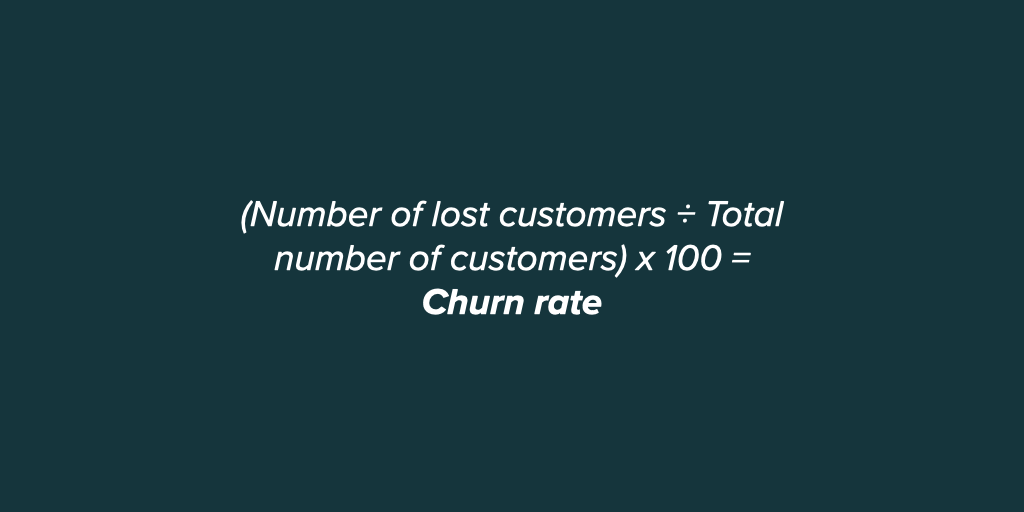
How well are your company’s products and services meeting your customers’ expectations? More importantly, how can you tell? The answer lies in measuring customer satisfaction.
Customer satisfaction is a common buzzword thrown around in management and customer service meetings. But too often, it’s discussed in vague terms because there isn’t a single customer satisfaction metric that can paint the full picture.
Instead, customer satisfaction is best quantified using multiple metrics. Analyze metrics from various sources so you can determine whether or not customers are satisfied—and the reasons why.
Why measure customer satisfaction?
When you measure customer satisfaction, you can gauge customer sentiment and respond accordingly.
If you don’t measure customer satisfaction, it’s hard to tell whether your products, services, and overall brand experience are resonating with your audience. And if you’re not creating meaningful connections, you may end up alienating your customers and losing business over time.
When customers are dissatisfied, that means there are opportunities for you to improve. As you make changes to increase satisfaction, you’ll steadily build trust and loyalty with buyers.
Even when customer satisfaction is already strong, continually measuring it helps you understand why and where you stand apart in your industry. Then, you can double down in those areas to keep satisfaction levels high.
How to measure customer satisfaction
Combine metrics from different sources to get a complete picture of customer satisfaction.
-
Customer surveys
Customer satisfaction surveys are a perfect place to start because they’re fast and easy to complete. Usually, they’re sent to customers at the end of an interaction with a business.
You can create customer satisfaction surveys with a third-party tool like Qualtrics. Or, you can use specialized customer service software—such as Zendesk’s built-in customer satisfaction feature—to enable pop-up surveys after every interaction.
The surveys should be quick and painless so that customers are willing to fill them out. We recommend keeping surveys to three questions (at the most) and offering a mix of rating-scale and open-ended questions.
Depending on the questions you ask, surveys can help you calculate three satisfaction KPIs: customer satisfaction score, Customer Effort Score, and Net Promoter Score.
Customer satisfaction (CSAT) score
Your CSAT score helps you assess the quality of your customer support, products, or services. You collect this metric using a short and simple CSAT survey.
To calculate CSAT, start by posing the following survey question (or something similar):
“How satisfied were you with the [service/product] you received?”
Then, provide a 1-5 response scale, where 1 equals “very dissatisfied” and 5 equals “very satisfied.” Once you receive responses, you can use the following formula:

Say, for example, you receive 100 survey responses. Of the 100 responses, 80 customers answered the question with either a 4 or 5 (“satisfied” or “very satisfied”), indicating an overall positive experience. In this scenario, you’d have a CSAT score of 80 percent.
To simplify the calculation process you can also use this CSAT calculator by inputting your gathered results in the relevant field.
Customer Effort Score (CES)
CES reveals how easy it is for consumers to resolve an issue, get an answer, or complete a task. This metric can be used as a high-level indicator of customer satisfaction because the easier the experience is, the more satisfied and loyal customers tend to be.
According to the Zendesk Customer Experience Trends Report, when customers can’t resolve a problem or get an answer quickly, companies lose the opportunity to create loyalty and are more likely to lose their business.
If you want to measure CES, a survey question might look something like:
“[Business Name] made it easy for me to resolve my issue.”
Similar to the CSAT survey, provide a 1-5 response scale, with 1 indicating “strongly disagree” and 5 indicating “strongly agree.” Then, use the following formula to calculate CES:

For instance, if 75 out of 100 surveys featured positive responses (either a 4 or 5), you’d have a CES score of 75 percent.
Net Promoter Score (NPS®)
NPS captures customer satisfaction by asking buyers how likely they are to recommend your company, products, or services to others. Satisfied customers are naturally going to promote your brand to friends, family, and colleagues.
“When your customers are happy, they bring you new customers,” says Shonak Patel, former director of customer experience at Appcues. “They become advocates for your product, sharing their positive experience and encouraging others to come on board. You can’t ask for better advertising than that.”
When your customers are happy, they bring you new customers. They become advocates for your product…You can’t ask for better advertising than that.Shonak Patel, former director of customer experience at Appcues
To measure NPS, start with a basic NPS survey question such as:
“How likely are you to recommend [Company/product/service] to a friend or colleague?”
Just like with CES and CSAT surveys, use a 1-5 response scale (where 1 means “very unlikely” and 5 means “very likely”). Respondents who leave a high rating (4 or 5) are considered promoters; those who leave a low rating (1 or 2) are detractors; those who leave a mediocre rating (3) are passives.
Once you have all your responses, determine the percentage of promoters and the percentage of detractors.

Then, use the following formula to calculate NPS.

Let’s say you send out an NPS survey, and 20 percent of respondents are detractors, 10 percent are passives, and 70 percent are promoters. Your NPS score, in this case, would be 50.
You can use industry NPS benchmarks to better understand how your business stacks up against others in your industry. Usually, a score of 50 or higher is above average for most companies.
-
Focus groups and advisory boards
While surveys are helpful for gauging customer satisfaction, they often lack context as to why customers gave you a specific score. Focus groups and advisory boards enable you to connect with consumers directly and learn more about their needs, motives, and behaviors.
Focus groups are generally one-time meetings where a small group of customers provides feedback on your current or future business offerings. An advisory board is similar, but the same group gives feedback on an ongoing basis rather than just once.
To set up a focus group or advisory board, start by establishing your objectives. Do you want feedback on a specific product? Do you want to know how you can improve your customer support? Then, set a time and location for the meeting. Use your email list, social platforms, or advertisements to recruit participants. Sometimes it helps to offer an incentive (like free or discounted products) to encourage participation.
Before the meeting, create an agenda so you can keep discussions on track. If you plan to meet with the same group again, choose a follow-up meeting date before the group disperses. To get the most out of your focus group, consider recording the meeting so you can reference reactions and responses later.
Use that valuable customer feedback to make adjustments to internal processes, products, services, and business strategies. Say a common theme is that customer service agents aren’t friendly or it takes too long to get a response. You can take that information and implement new training processes for agents or invest in customer service software like Zendesk to improve support interactions.
-
Social media
Social media gives you 24/7 access to customers’ opinions about your brand. Reading reviews, posts, and direct messages can help you assess customer satisfaction.
It’s become increasingly important to monitor what people say about you on social media—consumers won’t hesitate to blast your business when they’re unsatisfied. Take one TikTok user who went viral when she shared her disappointment with Chanel’s $825 advent calendar. The video received more than nine million views.
Use a social media sentiment tool, such as Awario or Brand24, to track positive and negative comments, reactions, reviews, and messages. Or, measure your social sentiment score using the following formula:

Beyond calculating your social sentiment score, also look for trends in engagement to better understand why customers feel that way. Maybe there’s a phrase that buyers use consistently, such as “friendly customer service” or “long wait times.” Those recurring themes allow you to identify areas for improvement or to determine where you stand out from the competition.
Speaking of competitors, it isn’t just your social media platforms that can help you evaluate customer satisfaction. Use a social media competitor analysis tool like Sociality to keep an eye on how customers engage with competitors, too.
Say people are raving about how much they love a particular product feature that a competitor offers, but it’s not something you offer. That could indicate why consumers aren’t fully satisfied with your brand—and it’s probably why they chose your competitor in the first place. With that in mind, you can focus on improving your current offerings or adding that specific feature to your product.
You can also learn what consumers dislike about a competitor and double down on exceeding expectations in that area. It can be your top selling point and set you apart from the rest.
-
Response rates
In today’s fast-paced and connected world, consumers expect quick answers, so your response times can heavily influence customer satisfaction.
According to the Zendesk Customer Experience Trends Report, 73 percent of customers say fast resolutions are important to a good customer service experience. Additionally, SuperOffice research shows that 46 percent of customers expect a response in under four hours, and 12 percent expect a response within 15 minutes or less.
Two metrics to track are first response time (how long it takes a support agent to respond to a customer request) and resolution time (how long it takes for an agent to completely resolve an issue). Customer service software solutions like Zendesk can automatically monitor and calculate these response time metrics for you. Or, you can track them manually using a timer and spreadsheet.
Calculate first response time with this formula:

To find your average resolution time, use the following formula:

For example, say you receive and resolve three customer tickets in an eight-hour workday. One issue takes you three hours, another takes you one hour, and the last one takes you four hours. Your average time to resolution would be 2.6 hours.
The more a company can reduce response and resolution times, the more it can improve the customer experience and, in turn, customer satisfaction.
-
Churn
Satisfied customers are less likely to split and more likely to make repeat purchases. Zendesk research shows that 52 percent of customers go out of their way to buy from their favorite brands. So if your buyers are happy, your retention rate should be high and your churn rate should be low by industry standards.
To calculate customer churn rate, use this formula:

You want to see churn decrease, or at least stay stable, over time. If your churn rate starts to grow significantly, it may indicate that something is causing dissatisfaction among your customer base.
How to improve customer satisfaction
Once you figure out how to track customer satisfaction, you’ll have the data necessary to determine whether or not you’re meeting your audience’s expectations. If customer satisfaction levels aren’t where you want them to be, don’t panic. Here’s how you can improve customer satisfaction metrics, according to experts.
Grow your business by keeping customer satisfaction high
Customer satisfaction doesn’t only benefit your buyers; it also helps grow your brand. Satisfied customers provide tremendous value by continuing to do business with you, promoting your products or services to others, and offering valuable feedback.
Happy and loyal customers are your greatest asset. Focus on measuring and growing customer satisfaction today to help your company flourish tomorrow.